A common question we get from our community is:
What is the difference between SwisensPoleno Mars & SwisensPoleno Jupiter?
In this article we explain the main differences between these two systems. We will cover both technical and application specific aspects. In the end, you will be able to better understand the products and, in the best case, find the most suitable measurement system for bioaerosol monitoring.
Airflow, laser and other similarities
But before we get into the details of the differences, let’s first point out the similarities between the two systems. After all, our instruments all work on the principle of air flow cytometry:
The instrument continuously aspirates air from the environment using an air pump. The air flow guides the aspirated particles to the measuring chamber and through several laser beams. Depending on the particle properties, the particles change the light situation in the measuring chamber, which in turn is detected by cameras and sensors. The animation below shows how this works in our systems. The particles fly through the system with 0.5m/s and are released within a fraction of a second. This principle allows the measurement and identification of single aerosol particles without the need of a sample carrier and therefore in real time.
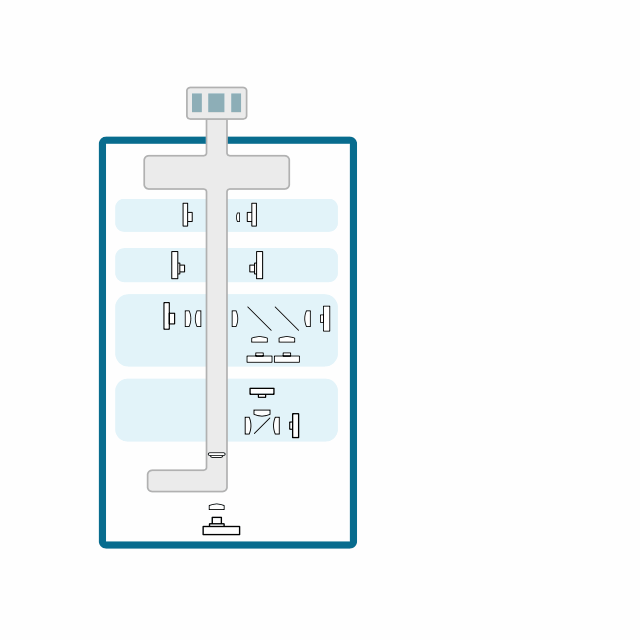
Digital holography
The buzz word “camera” brings us to the next common feature. Both systems contain a detector in the first stage of the measuring chamber that detects when a particle has flown into the measuring chamber. This then activates two cameras for image generation in the second stage. Following this procedure, the cameras each generate two high-resolution holographic images per particle, which fly through the measurement chamber one at a time.
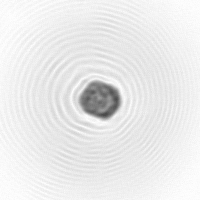
It is precisely such images that enable automatic identification of particles with artificial intelligence. Consequently, we give here a small technical discourse about further similarities:
Both SwisensPoleno Mars and SwisensPoleno Jupiter use artificial intelligence to identify particles. More precisely, supervised machine learning ensures that the measured particles are assigned to trained classes. Thus, both systems can distinguish and identify a variety of bioaerosols and other aerosol particles from the air.
With the small discursion about artificial intelligence, we round off the similarities and summarize as follows:
Both systems…
-
are based on the same principle of air flow cytometry.
-
monitor pathogenic bioaerosols and aerosol particles in real time.
-
generate holographic images of particles.
-
use artificial intelligence and can assign particles to defined classes.
But now to the actual topic of this article. What is the difference between SwisensPoleno Mars & SwisensPoleno Jupiter?
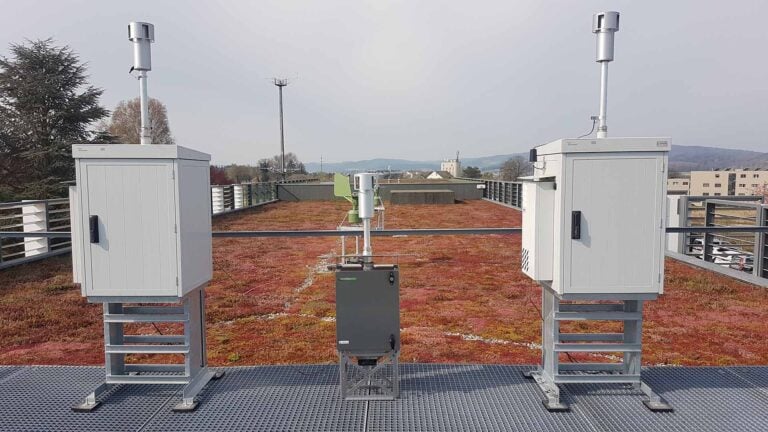
Weight, size and other differences
The visual differences between the two systems are easy to see. SwisensPoleno Mars is a bit smaller and therefore lighter than SwisensPoleno Jupiter. This is due to the fact that Jupiter has two additional stages (see blue border) for fluorescence and polarization measurement. These stages require a somewhat more complex hardware design and must be well protected from external influences such as extreme temperatures.
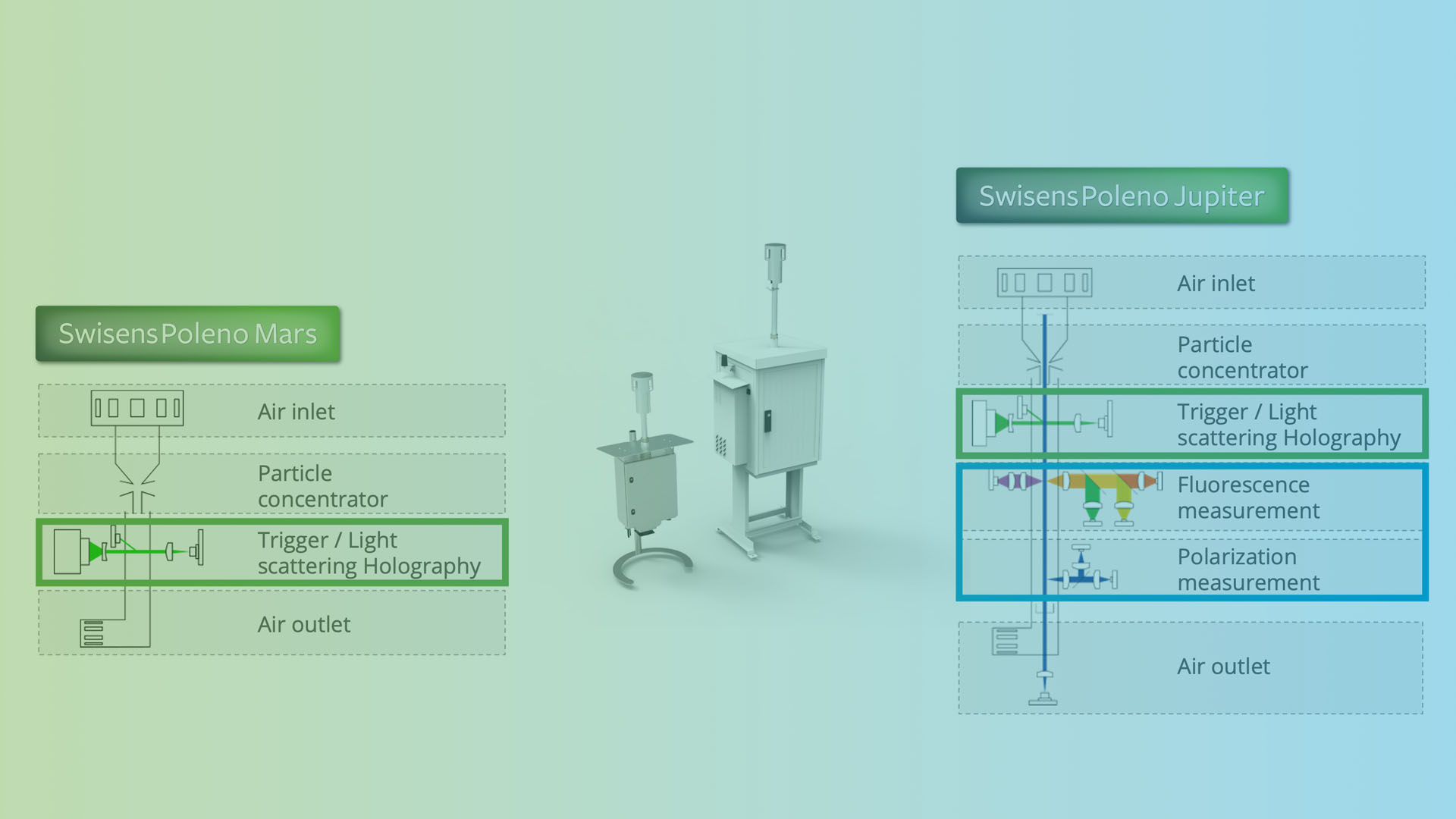
This also explains why the SwisensPoleno Jupiter is packed in a robust and well air-conditioned weatherproof housing. It is therefore ideally equipped for long-term outdoor monitoring. When measuring and monitoring air indoors (e.g. in the laboratory), SwisensPoleno Jupiter can also be operated without weather housing.
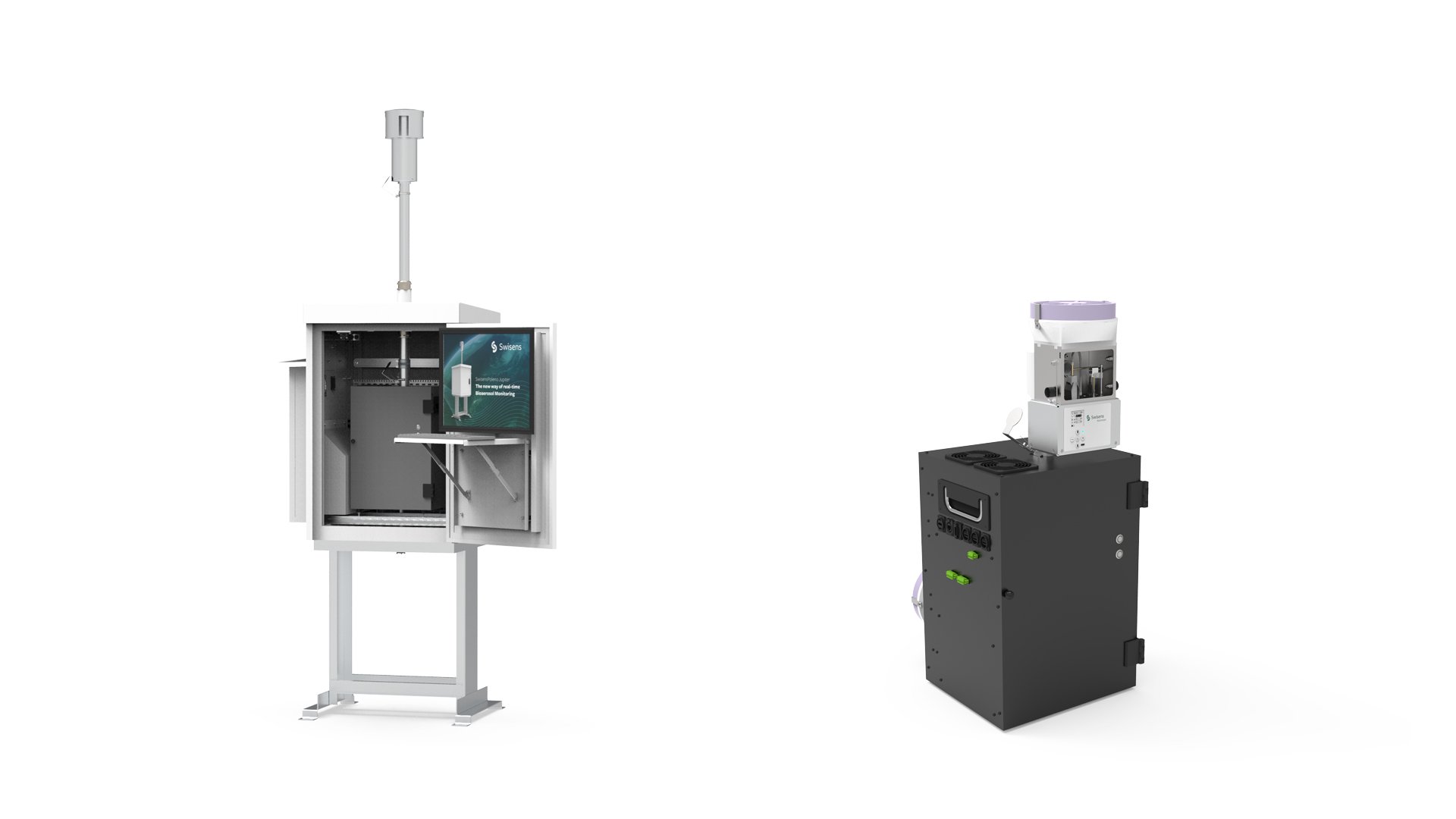
In comparison, the hardware and electronics of the SwisensPoleno Mars are built directly into the weather protection housing and also has a small air conditioner. It follows that the hardware design is optimized for a compact, lightweight and ultimately cost-effective system.
So why purchase a larger, heavier and more expensive system? This question is absolutely reasonable and brings us straight to the next comparison.
More measurement methods enable more applications
What we mean to say is that with SwisensPoleno Jupiter a broader portfolio of aerosol particles can be monitored. To give a few examples, first experimental measurements with spores and microplastics in the laboratory look very promising. What follows is a brief detour into the characterization of aerosol particles in real time:
With digital holography, both systems generate images. These images provide information about the particle morphology. Looking again at the system in cross-section, the second and third stages include components of fluorescence spectroscopy and polarization measurement. Both provide additional information on the morphology and chemical properties of aerosol particles.
In short, SwisensPoleno Jupiter can collect additional information about the passing aerosol particles with stages 2 and 3. If we remember that both systems identify particles with “Supervised Machine Learning”, then the keyword “data” takes on a very big meaning. The explanation for this is simple:
The more and independent information the algorithm gets, the better it can assign the particles.
This statement has an impact on our recommended use of SwisensPoleno Mars and SwisensPoleno Jupiter. And this brings us to our last section.
Which system would be the best fit?
Following the above, we would like to offer the opportunity to select the right system for the right application. When monitoring aerosol particles, the question quickly turns to what particle size can be measured with the measuring system. The following illustration will give you the right answer.
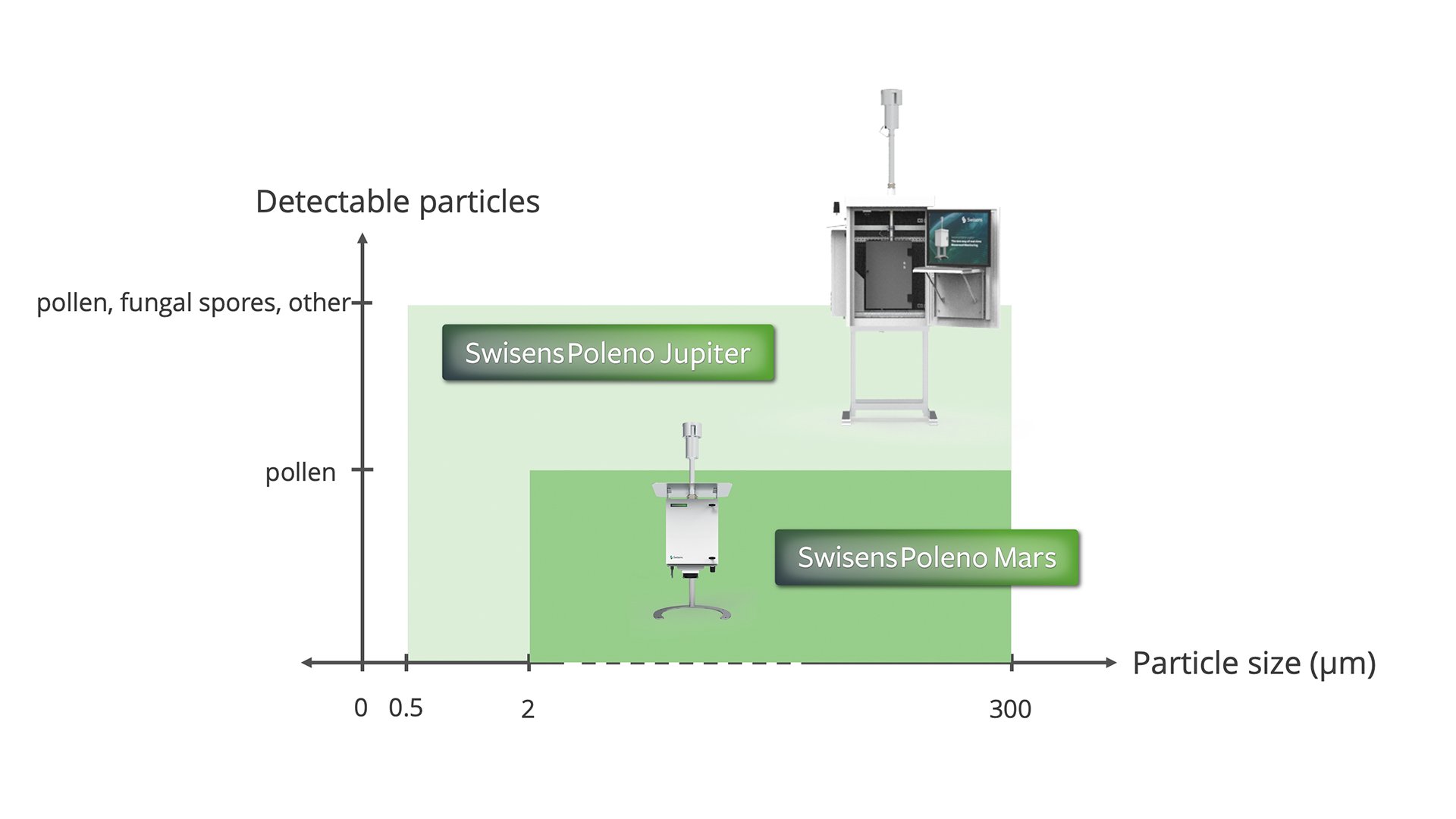
The difference between the minimum size of 2µm of SwisensPoleno Mars and 0.5µm of SwisensPoleno Jupiter is very small. In fact, we want to express that the broader the portfolio of particles to be monitored, the more important this additional information of fluorescence & polarization of SwisensPoleno Jupiter becomes. Here is a concrete example:
Pollen are among the largest bioaerosols in terms of dimension and have a diameter of 20µm and more. Many pollen, or pollen taxa, have a very characteristic and unique shape. For example, pollen grains of birch, hazel and so on always look the same with small variations. So they are ideal to identify with holographic images and automatic image recognition.
Digital holography is thus very satisfactory for monitoring the current pollen load. It gives SwisensPoleno Mars enough information for reliable and correct pollen monitoring in real time.
What about other aerosol particles?
If real-time pollen monitoring alone is not enough, then there is probably no getting around SwisensPoleno Jupiter. To elaborate a little more, here is a concrete example:
In comparison to pollen, airborne fungal spores have different appearances. In some cases, they show considerably greater variations in length and can also fly through the air in chains. Individual spores are much smaller than pollen. As a result, the shape of the pollen grain is much better resolved. As a consequence, image analysis of holographic images reaches its limits for small and very similar looking particles. This is where fluorescence comes into play. Latest measurement experiments and investigations with spores show that the characteristic values of the relative fluorescence spectrum already speak a much clearer language. In this case, the algorithm receives better information from the fluorescence than from the holographic images.
Current results and detailed illustrative material from our measurement campaigns will soon be published in scientific publications.
This very theoretical example is only meant to explain the interaction of holography and fluorescence. As unpredictable as nature is, we are of course careful not to say that reliable algorithms can be generated with it in any case. At the end of the day, there is nothing left but to measure the particles and look for significant information from the mentioned methods. However, with SwisensPoleno Mars & Jupiter we have promising approaches and perspectives to do exactly that.
Want to learn more about SwisensPoleno Mars & SwisensPoleno Jupiter? We will be happy to give you a personal introduction and demonstration.
Patrick Minder
Marketing & Sales
